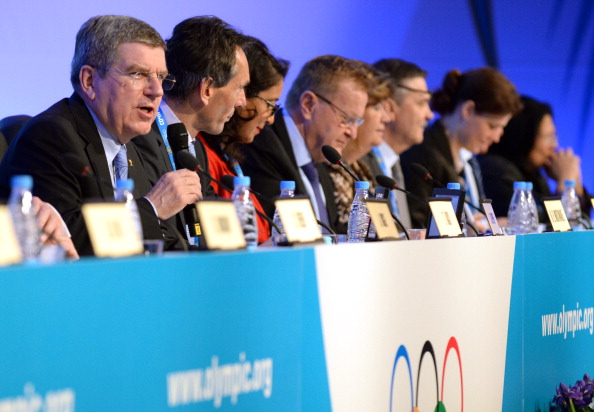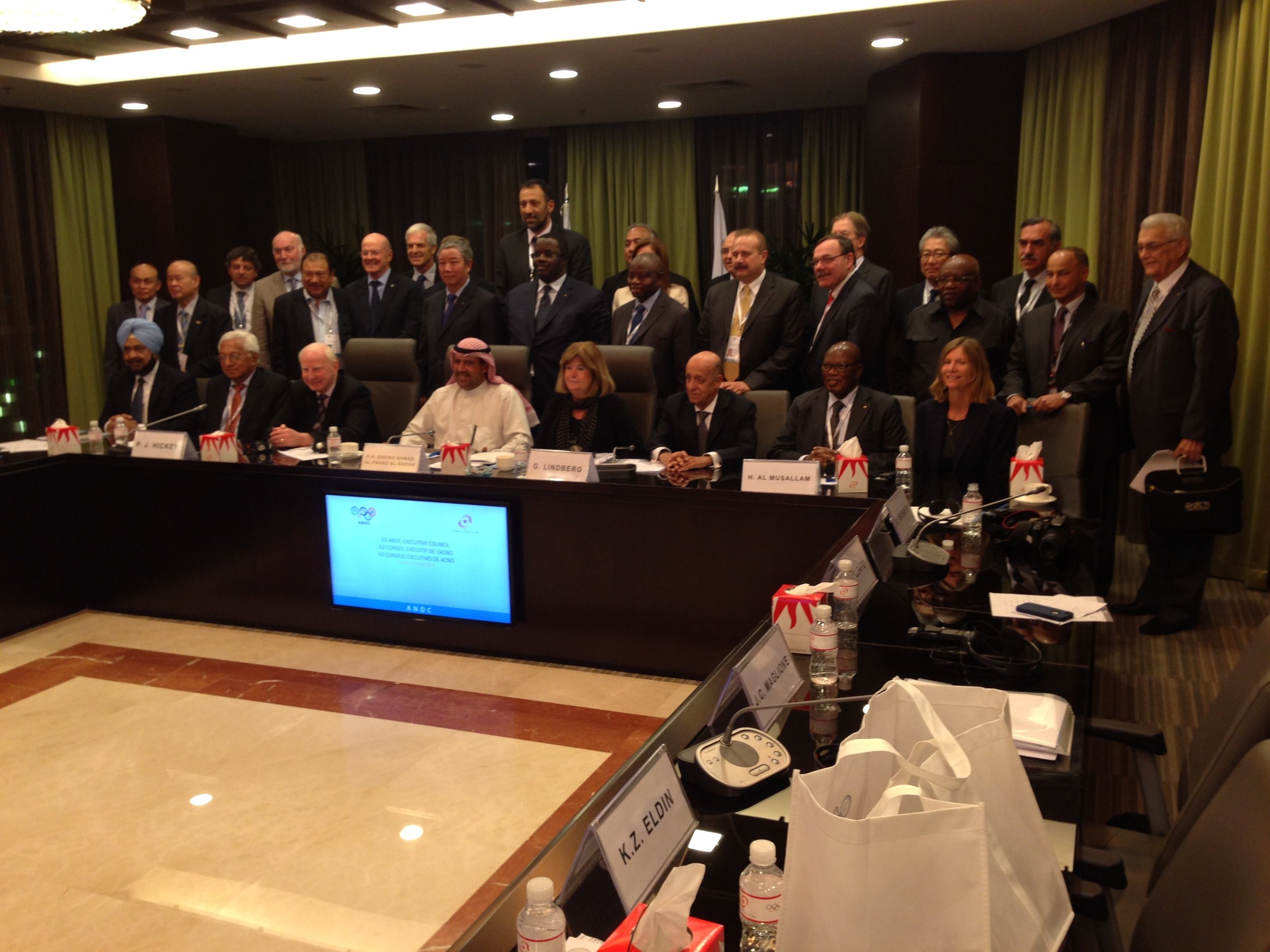One of two Norwegian government parties voted Sunday against supporting Oslo’s bid for the 2022 Winter Games, Associated Press reported, in a three-paragraph story likely to be buried in the back pages of newspapers and de-emphasized by analytics monkeys at websites around the world. It’s 2014. It’s eight years until 2022. The International Olympic Committee isn’t even going to vote for the 2022 city until next year. Who could possibly care?
Everyone should care.
To put it another way — if you have even the most remote interest in the ongoing vitality of the Olympic movement, you should care.
To put it yet another way — the IOC has an enormous problem on its hands.
One notion here is to use the connotatively more neutral word “challenge” — as in, the IOC has had a huge challenge for the last few bid cycles, and in particular Winter Games bid cycles, attracting enough interested and qualified cities.
Let’s be real, and the language has to reflect that reality.
The IOC has an enormous problem.
This big problem is of its doing, and is many, many years in the making.
The problem is complex.
It is various parts finance, governance, perception and (lack of, by the IOC) communication — with cities, states and nations saying the Games have become way, way, way too expensive; or they don’t like or don’t trust the IOC; or both.
Indeed, a 2008 survey by the British think tank One World Trust found that when looking at 30 corporations, inter-governmental agencies and non-governmental organizations, the IOC ranked 30th in what it called “accountability indicators,” suggesting it was the least accountable and transparent.
Ahead of the IOC on this ranking were such institutions as the International Atomic Energy Agency (29), NATO (28), Halliburton (26), Goldman Sachs (20) and Royal Dutch Shell (12).
In South Korea last Monday, at a good governance forum sponsored by the International Sport Cooperation Center, a Seoul National University professor, Min-Gyo Koo, reminded the audience of that survey, which in Olympic circles strangely has gotten little attention.
One of the panelists at the conference, Anita DeFrantz of the United States, now on the IOC executive board, a member since 1986, told the audience, “I cannot accept that we were behind Halliburton and Shell. That is not acceptable.”
Another panelist, Ivan Dibos of Peru, an IOC member since 1982, said, “”That No. 30 ranking could be looked at positively or negatively,” adding a moment later, “I take it as something positive and I rather prefer it that way.”
In the IOC’s defense, Koo said, at least the IOC made the top 30. Soccer governing body FIFA, he observed, didn’t.
This, then, is what it has come to — at least the IOC is on the list.
What it should be is this, as Koo also pointed out, the new IOC president, Thomas Bach, reminding one and all last December, albeit in the context of a dispute involving India’s national Olympic committee, “It’s about the principles … good governance for the IOC is a key issue. We need to be strict and to make sure the rules of good governance are applied.”
Governance is not sexy. But it is essential. And this should be a key focus of the IOC’s “Olympic Agenda 2020” process now working its way toward Monaco and the extraordinary session in December.
So should PR. The members of the IOC know it is a pass-through that keeps some percent of the money it takes in. Can they all say immediately what percent, to refute the perception the IOC is not some avaricious money-sucking beast? (It keeps roughly 10 percent, perhaps a touch less.) How many know the quadrennial Solidarity budget, which sends dollars back to developing countries for athlete development? (It’s $438 million for 2013-16.)
The same goes for finance — and the issue of how much the Games should cost.
The Sochi Games were, in hindsight, a success — but.
The $51 billion price tag for those Games is, in significant measure, its primary legacy, at least when it comes to the next couple bid cycles.
It does not matter — again and for emphasis, it does not matter one bit — whether that figure is true or not.
That is the number that is out there, and so that is the number everyone around the world believes.
It also does not matter — again, it simply does not matter — that the Games’ organizing budget was roughly a couple billion dollars and the rest went toward infrastructure.
The general public does not understand the difference between operating and infrastructure budgets. They don’t want to hear it. It’s all just money.
After the collapse of the Soviet Union, Russia had no winter sports facilities. Russia bid for the Games, and won. To get the job done, the Russians had to start from nothing. The short story of Sochi 2014 is that the Russians built two new cities, Adler and Krasnaya Polyana, from scratch.
That cost $51 billion.
The $51 billion question: who besides Russia has that kind of money?
China does. The 2008 Summer Games in Beijing purportedly cost roughly $40 billion.
This, then, is the problem.
Who in the world besides Russia or China has $40 or $51 billion just lying around? For a sports event that lasts 17 days -- even if, as the IOC consistently says, and virtually no one hears, most of that money is going toward roads, airports, metro lines, that kind of thing?
Big money. Big issues. Big problem.
It for sure does not help that Rio for 2016 is a hot mess.
Rio, too, is way, way, way over the initial infrastructure projections.
And despite the backtracking that IOC vice president John Coates engaged in after his initial comments last week — he’s now saying that, sure, Rio can “indeed deliver excellent Games” — it’s worth noting that in law school, they teach you in evidence class to pay attention to what people say when their message isn’t at risk for being shaped.
Coates, being an excellent lawyer, would surely know this.
What he said initially, of course, was that preparations for Rio — which he has visited six times as part of the IOC’s inspection team — were the “worst I have ever experienced.”
Sochi and Rio are the triggers.
The big problem facing the IOC, however, has been simmering for a long, long time. It is now finding increasing expression not just in Oslo but across western Europe, the IOC’s once and forever soul, which makes it all the more problematic.
In February, 2012, Rome withdrew from the 2020 campaign, the then-premier, Mario Monti, saying that a projected $12.5 billion was too much. Rome put on the 1960 Games.
In the afterglow of a European Summer Games in 2012, in London, arguably the best-ever Summer Olympics, voters in four -- and, now, maybe five -- separate countries have shot down Games bids:
In March, 2013, voters in Switzerland ended a 2022 bid for St. Moritz and Davos. St. Moritz staged the Winter Games in 1928 and 1948.
A few days later, voters in Austria rejected a Vienna 2028 plan. Innsbruck put on the 2012 Winter Youth Games; it staged the 1976 and 1964 Winter Games. And Salzburg bid for the 2014 and 2010 Winter Games.
Last November, balloting in Germany killed a Munich 2022 bid.
Munich would have been the presumptive 2022 favorite. The city played host to the 1972 Summer Games; it had bid for and lost (to Pyeongchang) for 2018; Garmisch-Partenkirchen, about an hour south, had staged the 1936 Winter Games.
Ludwig Hartmann, a Greens Party lawmaker and a leader of the movement, called “NOlympia,” that led the opposition to the plan, said, “The vote is not a signal against the sport but against the non-transparency and the greed for profit of the IOC.”
Meanwhile, a leading German newspaper, Süddeutschen Zeitung, had run a column comparing the IOC to the mafia and the “North Korean regime.”
This past January, Stockholm pulled the plug on a 2022 bid, the City Council saying the project was too expensive. Stockholm staged the 1912 Summer Games.
Now, Oslo.
Nearby Lillehammer staged the 1994 Winter Games, lauded by many as the best-ever. And Oslo itself put on the 1952 Winter Games.
The global economic situation has already affected the 2024 Summer Games race, too: Mexico City, Toronto and two Russian cities, Kazan and St. Petersburg, have already pulled back for a variety of finance-related reasons.
This is not just an Olympic Games problem. This is an Olympic movement problem. Last month, Hanoi dropped out of staging the 2019 Asian Games, the once-every-four-years event attracting thousands of athletes, citing financial concerns.
In theory, there are five applicants still in the 2022 Winter Games contest: Oslo; Beijing; Almaty, Kazakhstan; Lviv, Ukraine; and Krakow, Poland.
Polish voters are due to vote later this month about the Krakow bid. Polls suggest a difficult situation.
Lviv is in western Ukraine; the eastern sector of that country is being ripped by armed conflict and the fate of the bid is highly uncertain.
That might leaves only three for 2022. Or would it be two?
AP reported the Progress Party vote Sunday against supporting Oslo’s bid is “likely” to put the city out of the race. In Norway, the Conservative and Progress parties rule in a coalition government; Progress Party members said the Games would affect the government’s ability to fund infrastructure projects, education, health care and tax cuts.
For 2018, the IOC managed only three Winter Games candidates: Pyeongchang, Munich and Annecy, France. And in the end, Annecy managed only seven votes.
For 2014, the IOC deemed only three bids worthwhile enough to pass along for a vote: Sochi, Pyeongchang and Salzburg, Austria.
The Oslo bid’s immediate future depends perhaps on whether it can still get the government to underwrite the needed financial guarantees, and whether those guarantees can be offered before the IOC’s July 8-9 executive board meeting. That’s when the 2022 list will be cut to the finalists — the cities that will actually go to a vote in July, 2015.
The IOC — and let’s also be clear about this — has a huge interest in seeing Oslo stay in the race. If the Polish referendum goes badly and if the situation in Ukraine continues to deteriorate, Oslo would be it for Europe for 2022.
For now, though, there’s this, from Atle Simonsen, the head of the youth wing of the Progress Party, speaking to Norwegian public broadcaster NRK: “Believing that the Oslo Olympics would cost under 50 billion kroner,” about $8.4 billion, ”is like believing in Santa Claus, when the Sochi Olympics cost 500 billion.”



















